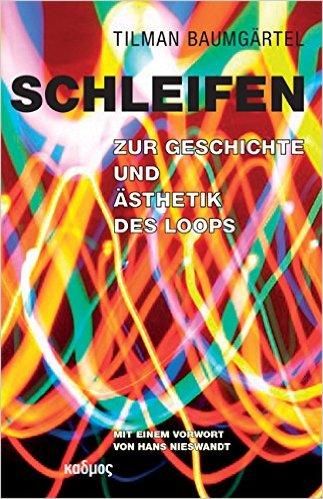Loops lijken onvermijdelijk sinds computers gebruikt wordt voor composities. Het herhalende element dat al snel tot sampling zal leiden.
De verwachting was dat de computer (eind jaren 50, begin jaren 60) een grote bevrijding zou zijn, het antwoord van de vraag van componisten zoals Boulez, Varèse en Xenakis. Maar eigenlijk was het een teleurstelling, feitelijk konden computers in die tijd helemaal nog niet zoveel behalve heel goed een klank (of een serie klanken) herhalen, hetgeen niet was wat men voor ogen had.
In bijv. Response van Boulez wordt op ironische wijze dat herhalende aspect van de computer neergezet aan de hand van een acteur die niets anders doet dan de hele tijd dezelfde zin uit te spreken. http://studiozenz.nl/master/25-jaar-interfaculteit-paradiso-27-juni/
Feitelijk werd er een soort loop tot stand gebracht, een vorm die in elektronische muziek heel belangrijk zou gaan worden.
Herhaling is een element dat in ontwerp ook vaak ingezet wordt? Voorbeelden? Om te beginnen de illustratie dat de cover van zijn boek siert. Zelf moet ik nu denken aan de silkscreens van Andy Warhol en de stapels Brillo en soepblikken.
door Zsa Zsa Linnemann
Meer over Schleifen van Tilman Baumgärtel op zijn website
Waar een toptien-playlist te vinden is die inzichtelijk maakt wat hij onder loops verstaat 10 Loop-Klassiker, die lange vor House und Techno entstanden.
Life In Berlin: The History Of Loops
A new book out by a Berlin author reveals the history behind how loops changed music. Though books have been written about the foundations of electronic music, this is the first to focus solely on loops. What’s surprising is that the history of this elemental structure has been so long overlooked.
The book, Schliefen. Zur Geschichte und Ästhetik des Loops or Loops, on the History and Aesthetic of Loops was published in June by Tilman Baumgärtel, a professor at Hochschole Mainz.
Put simply, a loop is “a short piece of audio or video that gets repeated over and over again with the help of recording devices,” Baumgärtel said.
Sampling a sound and repeating it digitally is so ubiquitous in recording these days as to seem completely commonplace. But that wasn’t always the case. Baumgärtel detailed the roots of loops by going back to the late 1940s and the late composer Pierre Schaeffer, who started to make music with locked groove records, records with samples repeated over and over again.
Schaeffer coined the term “musique concréte”, which is a French term for, “real music.” Instead of turning notes into music, Schaeffer started with real world sounds, composing with sampling and loops.
Those early examples of loops on records and magnetic tape changed artists like Elvis and the Beatles. Both artists experimented with tape loops, used them in recordings and mimicked the sounds in songs.
“I got into loops personally because I like loop-based music,” Baumgärtel said. “In the 90s, I used to go out in Berlin a lot to all these clubs that don’t exist anymore, like Tresor and Cookies and WMF. You couldn’t help noticing that the music they were playing there was very repetitive and very different from the music I grew up with.”
Of course, repetition is nothing new in music. But Baumgärtel’s book is making waves by tracing a very clear line through a technological history that has shaped everything from hip hop to electronic dance music. And he doesn’t mind saying he likes results.
“I think there is a productive side to loops, an organic quality to loops and an intellectual side to loops. What I observed when listening to minimal music, to techno music very intensely, where there is sometimes nothing changing anymore in the music, we start to create the change and that is the productive part of it.”
Bron: JOEL STONINGTON , Life In Berlin: The History Of Loops (2015, 2016) http://nprberlin.de/post/life-berlin-history-loops
